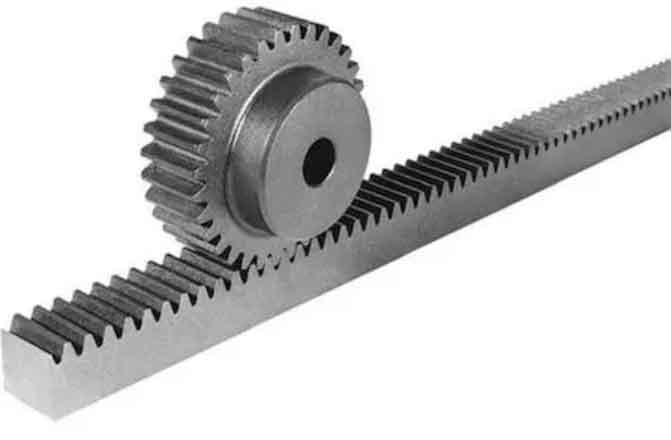
Rack and pinion gears offer high efficiency and precision in power transmission and motion control applications. They are widely used in various industries where accurate and reliable linear motion is required. Here’s a closer look at how rack and pinion gears unleash efficiency and precision:
1. Efficiency:
Rack and pinion gears provide high efficiency in power transmission due to the following factors:
- Direct Contact: The teeth of the pinion gear engage directly with the teeth of the rack, resulting in a direct transfer of power. This direct contact minimizes power losses that can occur in other types of gear systems.
- Rolling Contact: The rolling contact between the teeth of the rack and pinion reduces friction compared to sliding contact, further enhancing the overall efficiency of the system.
- Tooth Profile Optimization: The tooth profile of rack and pinion gears can be optimized for maximum efficiency. By carefully designing the tooth shape and contact patterns, manufacturers can minimize friction and improve power transmission efficiency.
2. Precision:
Rack and pinion gears offer excellent precision in motion control applications due to the following factors:
- High Positioning Accuracy: The tooth engagement between the rack and pinion gears ensures accurate and repeatable positioning. This precision is crucial in applications where accurate linear motion is required, such as CNC machines, robotics, and measurement systems.
- Low Backlash: Backlash refers to the amount of free movement or play between the teeth of the rack and pinion gears. Minimizing backlash is essential for achieving precise motion control. Rack and pinion gear systems can be designed with low backlash to ensure accurate positioning and prevent unwanted motion.
- Stiffness and Rigidity: Rack and pinion gears exhibit high stiffness and rigidity, which contribute to their precision. The rigid structure helps minimize deflection and maintain accurate alignment, even under high loads or rapid movements.
- Position Feedback: Rack and pinion systems can be combined with position feedback devices, such as encoders or linear scales, to provide closed-loop control and enhance precision. This allows for real-time monitoring and adjustment of the position to achieve the desired level of accuracy.
3. Compact Design:
Rack and pinion gears offer a compact design, making them suitable for applications with limited space constraints. The linear motion is achieved directly without the need for additional components such as belts, pulleys, or extra gears, which simplifies the overall system design.
4. Smooth Operation:
Rack and pinion gears can provide smooth and quiet operation when properly designed and maintained. The rolling contact between the teeth and the use of high-quality lubricants help reduce friction and noise, ensuring smooth and efficient motion.
Rack and pinion gears are widely utilized in applications that demand high efficiency, precision, and reliable linear motion control. Their ability to deliver efficient power transmission, accurate positioning, compactness, and smooth operation makes them a popular choice in industries such as automotive, robotics, CNC machining, and more.
